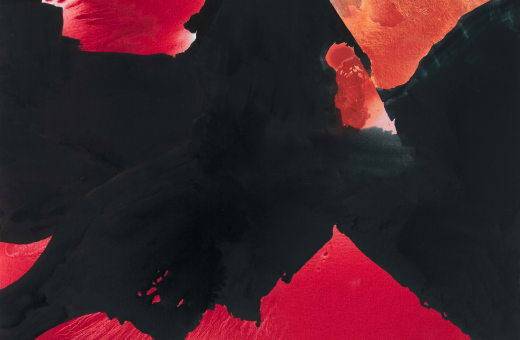News

A Survey of American Art That Isn’t Just Coastal This thoughtfully curated exhibition is evidence that much compelling and adventurous art is indeed being produced all around the country.
BENTONVILLE, Arkansas — A follow up to the 2014-15 survey show State of the Art, State of the Art 2020 at Crystal Bridges Museum of American Art and its new non-collecting sister site, the Momentary, is intended to be “a cross-section of artists working today.”
Organized by Momentary and Crystal Bridges curator Lauren Haynes, with Crystal Bridges associate curators Alejo Benedetti and Allison Glenn, it includes 61 artists whose works span painting, sculpture, photography, performance, video, digital media, textiles, and ceramics. It is similar in scale, intent, and ambition to, say, the Whitney Biennial. That’s where things get interesting. For all its equity and diversity, the last Whitney Biennial still focused squarely on East and West Coast artists, especially those from New York and Los Angeles (John Yau provided a helpful by-the-numbers analysis).
State of the Art 2020, like its predecessor, is entirely different. This exhibition of American art (wonderfully defined, since a goodly number of the artists are immigrants) in Northwest Arkansas encompasses a broad reach of America, not a skewed, bi-coastal version of it. New York and Los Angeles are represented by only one artist each, Chicago by six. The others hail from locales often entirely ignored by East and West Coast art institutions and curators — for instance, New Orleans, Tucson, Albuquerque, Denver, Cleveland, Atlanta, Detroit, and Kansas City, as well as smaller places like Spartanburg, South Carolina, Benbrook, Texas, and Spotsylvania, Virginia.
The selections are based on recommendations, curatorial research, and studio visits throughout the 48 contiguous states. The exhibition’s pertinent, refreshingly jargon-free themes — among them, Passing Time, Fragmentation, Ways of Seeing, and Stories of Place — emerged from the artworks.
At the Momentary is the resplendent “Exodus” (2019) by Denver-based artist Suchitra Mattai. The monumental tapestry, stretching across much of a long wall and onto the floor, is composed of brightly colored vintage saris woven around a rope net. It is, for me, a highlight of the show. I was entranced by this dense fabric force filled with coursing blues, shimmering golds, vibrant reds, soft yellows, and many other colors in interlacing patterns; it’s a dimensional, physical “painting” sans paint, with abundant ruffles, ridges, and folds.
Mattai, whose background is Indian-Guyanese, was born in Guyana and has lived in various cities and countries, including New York, Nova Scotia, and India, prior to settling in Denver. Some of the saris came from family members; she collected others in India and the United Arab Emirates, where there is a large Indian population. Mattai’s work revels in visual and material splendor while it celebrates family connections across generations, immigrant communities, the expansive Indian diaspora, and, especially, women within that diaspora.








